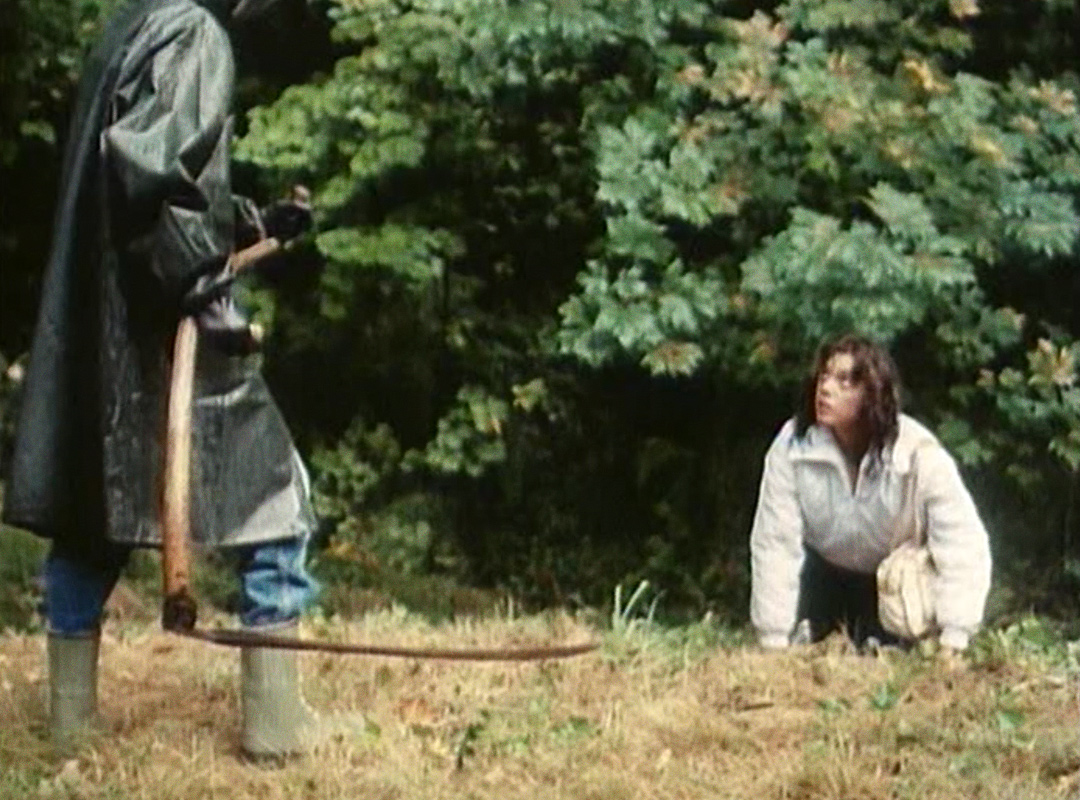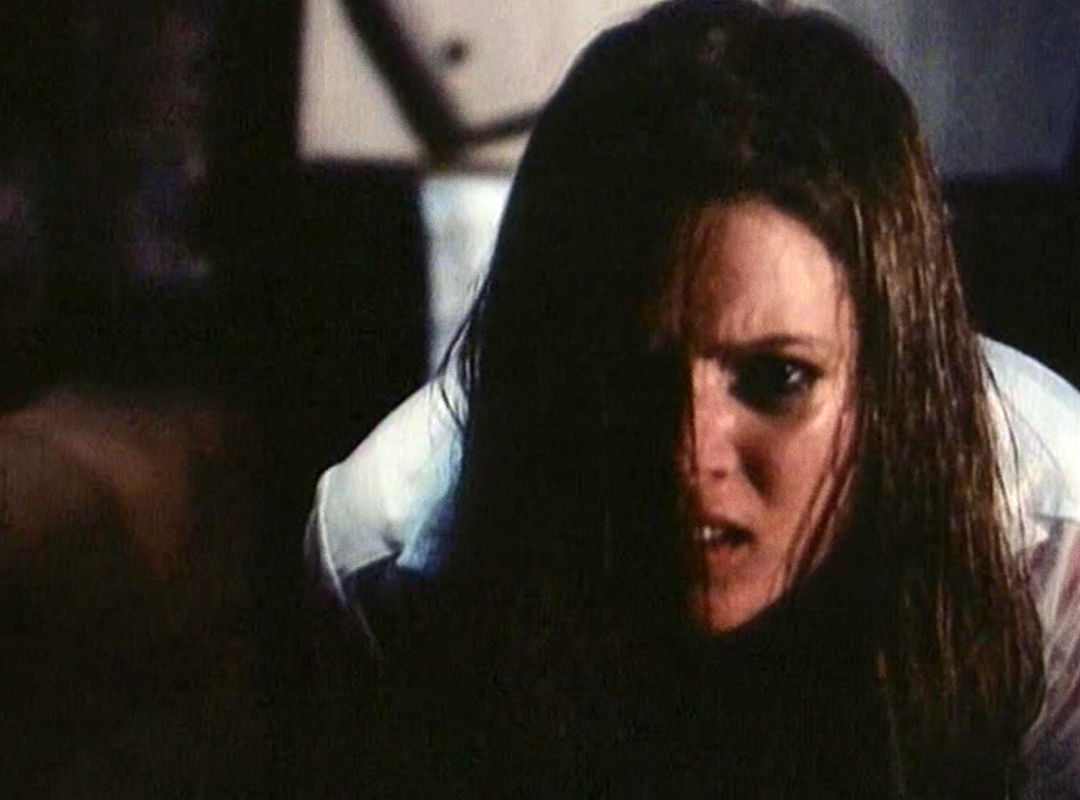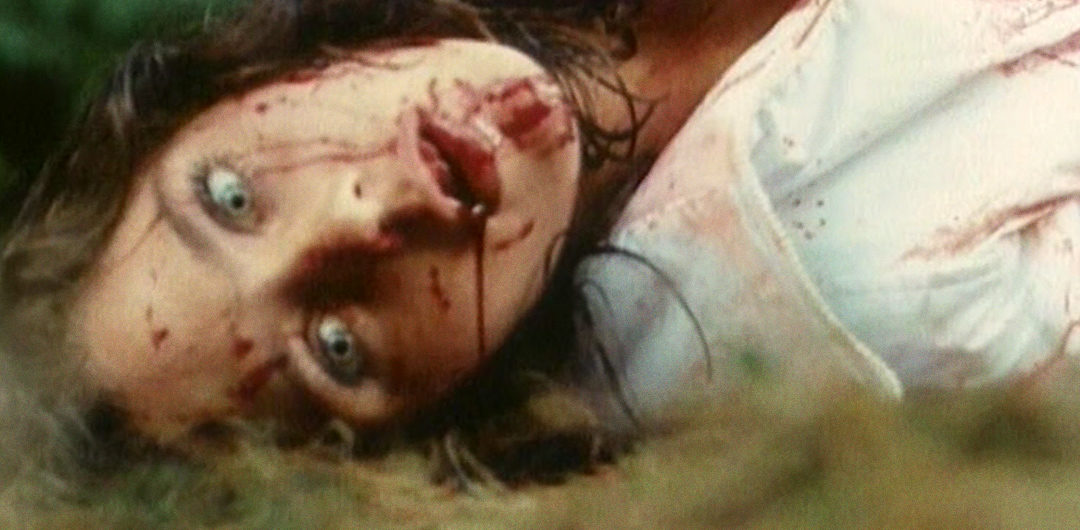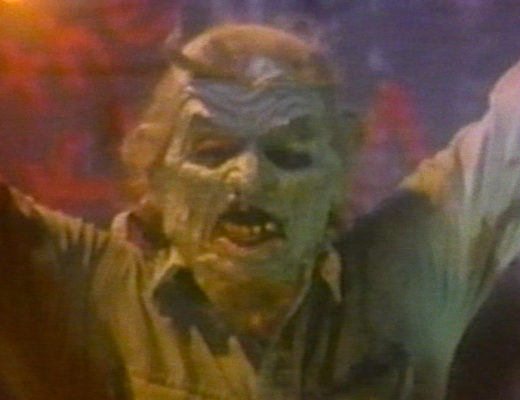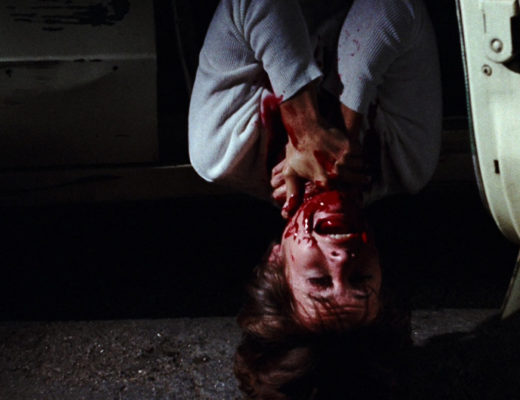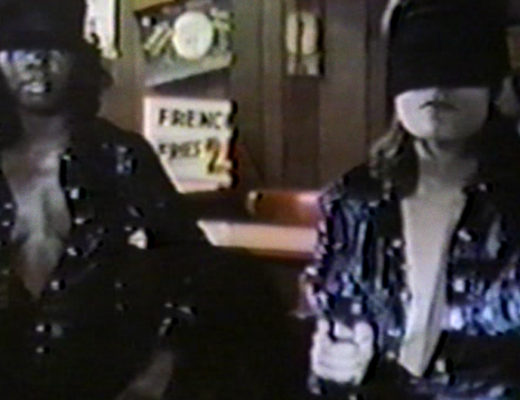In 1972, progressive dad-rockers Yes went on tour to promote their album Close to the Edge. This tour marked the first time that keyboardist Rick Wakeman would wear a sequined Dracula cape while performing.
Yes is not a band for me. But I’ll watch Rick Wakeman shred a wall of synthesizers while wearing a bedazzled Halloween cape all day long. Because sometimes, a mood-setting aesthetic is all that matters.
For proof, look no further than Unhinged.
Terry, Nancy, and Gloria pile into Terry’s Gremlin and start driving to a weekend-long “jazz festival.” I immediately hoped that something would happen to prevent them from reaching their destination. Because no one wants to watch a slasher that takes place at a jazz festival — especially me. Luckily, the ladies roll over a log in the middle of the road, which sends their car careening into a ditch. After the accident, the gals wake up in an opulent mansion. Marion Primrose, the lady of the house, explains that, “there isn’t a phone for two miles!” But Terry and her pals decide to stay at the manse with Marion and her mother anyway. It’s soon revealed that Mother’s intense hatred for men (“They’re putrid scum!”) is the result of a nasty family secret. Then a killer with a scythe shows up.
Unhinged is easily the greatest thing that ever happened to Portland, Oregon. Mostly because this movie has nothing to do with sulfate-free beard moisturizer or ravioli that costs $45, and everything to do with sinister slasher ambience. Shot in Portland by local filmmaker Don Gronquist for 100K, this is an amalgam of plagiarized plot points from Last House on the Left (tragedy on the way to a concert), Andy Milligan’s The Ghastly Ones (familial angst in a mansion), and Psycho (you’ll know it when you see it). It’s also shot in the style of Paul Naschy, which is achieved by placing the camera at least fifteen feet away from the action at all times. Unhinged is filled with long scenes of people eating dinner, walking in gardens, and listening to piano recitals. So what makes this movie so endearing? It starts with the synthesizers. And explodes from there.
In 1983, the British government issued the “Video Nasty” list — a group of horror and exploitation movies that were banned from home video under the Obscene Publications Act. Rippers like Sam Raimi’s Evil Dead and Lucio Fulci’s House by the Cemetery topped the list because they contained egregious scenes of guts-chomping and eyeball removals. But Unhinged, with its minor bloodshed and brief scenes of nudity, was also included. This automatically sets up an expectation that’s impossible to satisfy. This movie doesn’t deliver the visceral kicks of a movie with Fulci’s name on it. But that doesn’t make it any less notable.
Unhinged suffers from poor pacing and an uneven structure. But director Gronquist maximizes the potential of combining mood-enhancing aesthetics with dark themes. Most of the heavy lifting in this area is done by Jonathan Newton’s synthesizer score, which blasts the movie into another dimension. Brilliant and relentless, the soundtrack sounds like a black mass that’s being sabotaged by an all-skeleton Soft Cell cover band. The music is perfect for a midnight axe murder, but totally surreal when it accompanies a dinner scene. There’s also Laurel Munson’s loud-yet-medicated lead performance as Terry, which wouldn’t feel out of place in John Waters’ Multiple Maniacs. These dream-like details enhance the grim reveals, making the movie feel damaged on multiple levels. Unhinged might be a terrific sleep aid, but it’s also a gloomy slasher mood piece — the kind that will never exist again.
During the end credits, a restaurant called Taco Time gets a “special thanks.”
I really like this movie.
